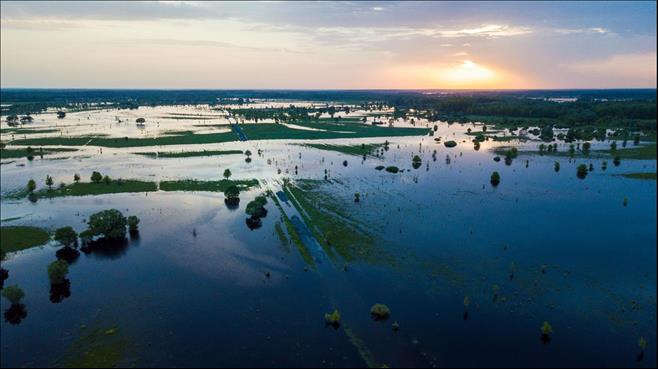
Yes, climate change can affect extreme weather but there is still a lot to learn
(MENAFN- The Conversation) The fact that the climate has warmed is hard for humans to actually experience first hand, and we certainly can't see carbon in the air with our own eyes. For most of us, climate change manifests itself and affects our lives through heatwaves, storms, wildfires, floods and droughts.
However, this does not mean that all extreme weather events are being made stronger or more frequent. The role played by climate change compared to other drivers of extremes – whether natural variability in weather systems, or man-made drivers such as deforestation – strongly depends on the type of extreme event and the part of the world and season they are happening in.
Attribution scientists like me aim to quantify whether and to what extent human-induced climate change alters the likelihood and intensity of extreme weather events. In some cases, like heat waves in European summers , it's a real game-changer. The European heatwave in July 2019, for example, was made up to 100 times more likely due to climate change. In other cases, analysis shows that the role of climate change was very small – for example recent droughts in Brazil were mainly driven by other factors .
And in some cases we do not know, either because the data and tools we currently have are not sophisticated enough to quantify the role of climate change – as was the case for droughts in East Africa – or because no study has been undertaken. This is the case for many extreme weather events occurring around the world, because attribution studies are still relatively rare and heavily skewed towards events happening in the developed world.
The website Carbon Brief has just published an update of its map of all the attribution studies that have looked at the impact of climate change on extreme weather events around the world . For now, the map still shows a heavy bias towards events in Europe, North America and Australia, and also towards heatwaves. However, with every update it is becoming more and more comprehensive as the science evolves and includes a more diverse set of events.
Science within the news cycleThe latest update includes, for the first time, rapid attribution studies – those that are done during or immediately after an extreme weather event. In December 2015, I was involved in one of the first such studies which found that climate change had made large-scale flooding after Storm Desmond about 40% more likely. A more recent study looked at tropical storm Imelda which drenched Texas in September 2019, and found that the rainfall was increased almost three times by climate change.
These sorts of studies are important, as they provide scientific evidence while the event is still in the news and everyone is still paying attention – not months later after the academic peer-review process.
But this has also made these studies somewhat controversial, because they do not go through peer-review before publication. To help address this, rapid attribution studies use peer-reviewed methods, make data publicly available, and regularly submit to peer-review journals after the fact. Such subsequent academic studies demonstrated that the rapid studies on Desmond , floods in Paris and the Mediterranean heatwave of 2017 stood the test of time. The inclusion of rapid attribution studies in the Carbon Brief map reflects a growing acceptance of these methods.

40˚C in Bordeaux, August 2017. Caroline Blumberg Attribution studies can be too conservative
This branch of science remains relatively new, and far from perfect. Attribution studies, rapid and traditional alike, have been criticised by some scientists for both being too conservative and underestimating the role of climate change. They also get accused of not being cautious enough in communicating uncertainty and therefore overstating the impact of burning fossil fuels on extreme weather events.
Underlying both arguments is the fact that the climate models needed for attribution studies are often not as good as one would like. In fact, in recent studies colleagues and I found that climate models underestimated the increase in heat extremes in Europe and Australia . The observed temperatures – that is, what was happening in the real world – increased twice as much as the temperatures predicted by the models.
If models do not represent the full warming seen in the real world, then attribution studies can only give conservative, and arguably too conservative, estimates of the role of climate change.
Overall, while climate models are very good at representing how increases in greenhouse gases affect average temperatures , they are less good at representing more local extreme events. Attribution studies remain our best (and only) tool for understanding the impact of climate change on extreme weather and on our daily lives. They play a key role in helping decision makers plan for, or avoid, a future where extreme weather events are more likely and intense due to global warming. This is particularly true if the role of climate change is assessed rapidly and alongside factors influencing vulnerability and exposure.
Attribution studies are also really important within climate science as they bridge the gap between observations and model projections. They test climate models in a real-world context, allowing scientists to understand better where they can have more confidence in their projections and where model improvements are needed before projections can be used for decision making.

Legal Disclaimer:
MENAFN provides the
information “as is” without warranty of any kind. We do not accept
any responsibility or liability for the accuracy, content, images,
videos, licenses, completeness, legality, or reliability of the information
contained in this article. If you have any complaints or copyright
issues related to this article, kindly contact the provider above.


















Comments
No comment